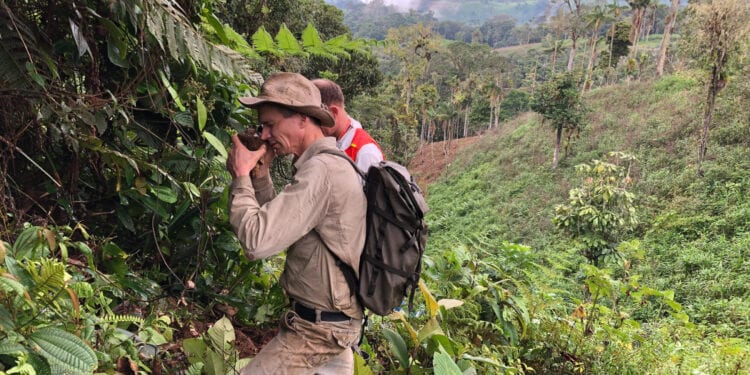Testing Tsenken N1 Target In Ecuador
Aurania Resources Ltd. (TSXV: ARU) had commenced a scout drilling campaign at the Tsenken N1 target in the company’s Lost Cities – Cutucu Project in south-eastern Ecuador.
The target is a copper-silver mineralised zone exposed at surface, and an underlying area of interest has been identified in MobileMT data.
Chairman and CEO, Dr Keith Barron, said the mineralised zone is expected to be intersected at 75m to 100m below surface, while the MobileMT target is at approximately 700m depth. Previous surface sampling has yielded results of up to 7.1% copper and 55 g/t.
“Tsenken N1 is an area where there are a number of small, mineralised breccia bodies with limited exposure on surface in some stream beds,” Dr Barron said.
“Most of the area in between the breccias is covered by thick foliage and not outcropping. Breccias, which essentially are bodies of broken and cemented rock, in this case with copper mineralisation between the fragments, can be formed geologically in many ways, but here a key to their interpretation is the presence of ‘exotic fragments’ which are clearly not from the wallrock.
“These fragments have been brought, probably from considerable depth, up the breccia conduit, by volcanic eruption. Breccia conduits or ‘breccia pipes” commonly will coalesce at depth into a larger breccia body or into the upper levels of a porphyry.
“Several years ago, I examined a group of metre-scale copper breccia pipes underground and on surface at Tres Chorreras in Azuay Province in Ecuador, and these ultimately merged downward into a copper porphyry that was intersected in drilling. I am hopeful that we have a similar geological scenario here.”
Heliborne MobileMT is currently being flown in the Awacha area where the target is a cluster of porphyries.
The MobileMT survey is being undertaken by MPX Geophysics Ltd. in association with Expert Geophysics Limited, both of Toronto, Canada.












